Mindful ChuChu
A downloadable experience for Android
Personal Summary
This was a 5-week student research project I worked on with three other students at Business Academy Aarhus, Denmark.
Working on this VR game project was a valuable learning experience in multiple areas. I practiced designing levels suited for VR gameplay, focusing on the added dimensions of player movement (e.g., hands movement). One of the biggest challenges was using Unity’s Timeline feature for the first time. It had a steep learning curve, but I quickly realized its power in curating player experiences through precise event sequencing.
Beyond development, I also gained insight into scientific research methods. Encountering concepts like control groups for the first time made me more aware of how to structure research for valid and generalizable results. Additionally, project planning and scoping this game provided me with crucial lessons. We initially over-scoped which required us to cut content and prioritize core features.
Overall, this project sharpened my technical and design skills in Unity, expanded my knowledge about scientific research, and taught me the importance of scope management during game development.
Idea
The target audience for this game were representatives of Generation Z, who are currently experiencing much more stress than any previous generation. Through our research, we found that Gen Z uses various ASMR (autonomous sensory meridian response) videos on YouTube to relax. This prompted us to utilize ASMR in virtual reality and create a gameful experience that people can use to alleviate everyday stress and struggles.
Goal
The main goal of this research project was to create a prototype of a VR experience that can make ASMR more interactive and immersive through the use of virtual reality headsets, directional audio, and haptic feedback from the controllers
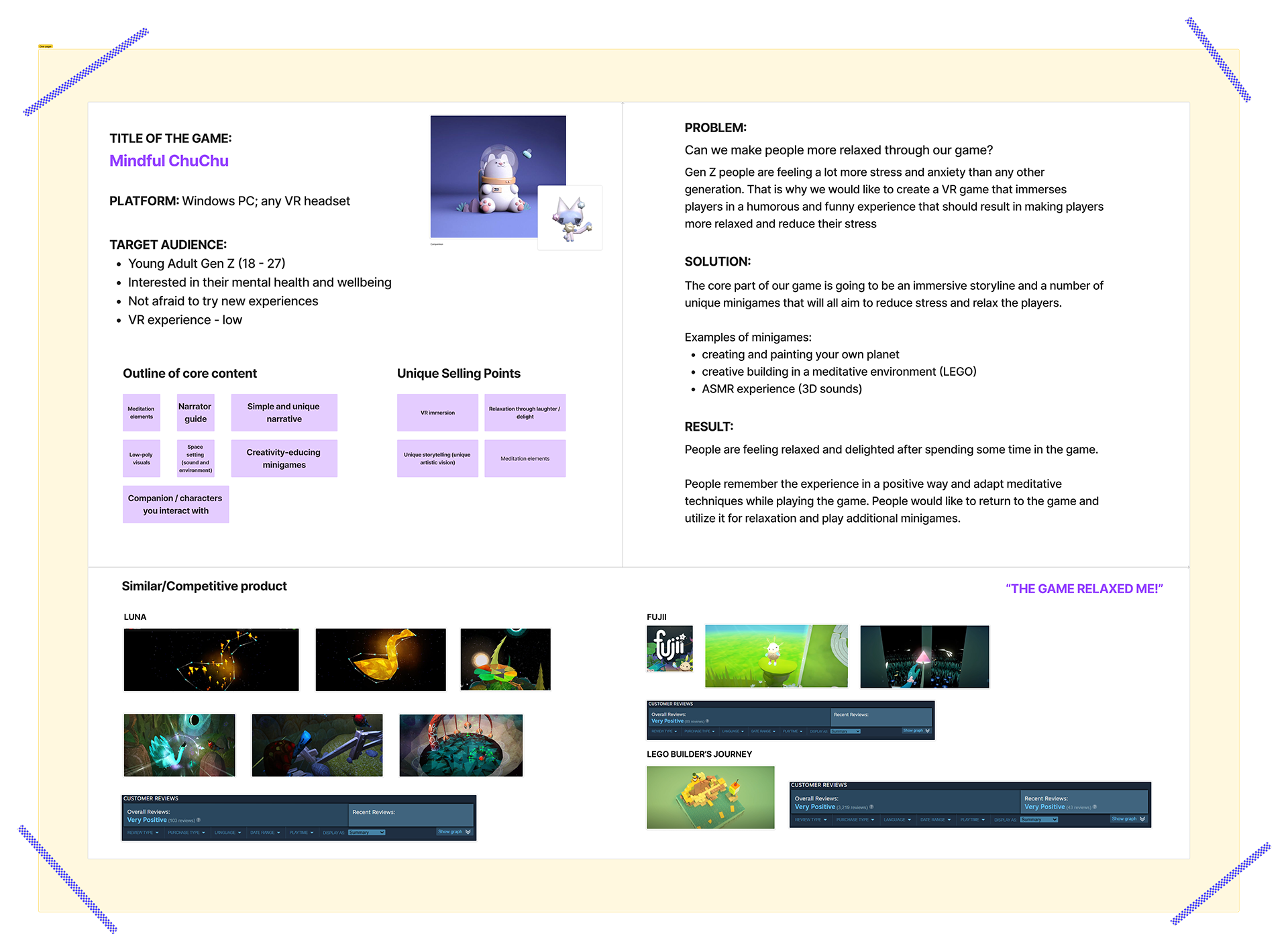
Action
Throughout our design process, we employed the basics of storytelling, game design, and audio design.
Narration was used to create a relatable narrative that players could follow throughout the experience (like guided meditation). In the second scene, I implemented basic game design principles to give players a simple goal and something to strive for. Lastly, we focused on audio design to create an immersive experience with an ambient background soundtrack and directional audio to achieve ASMR.
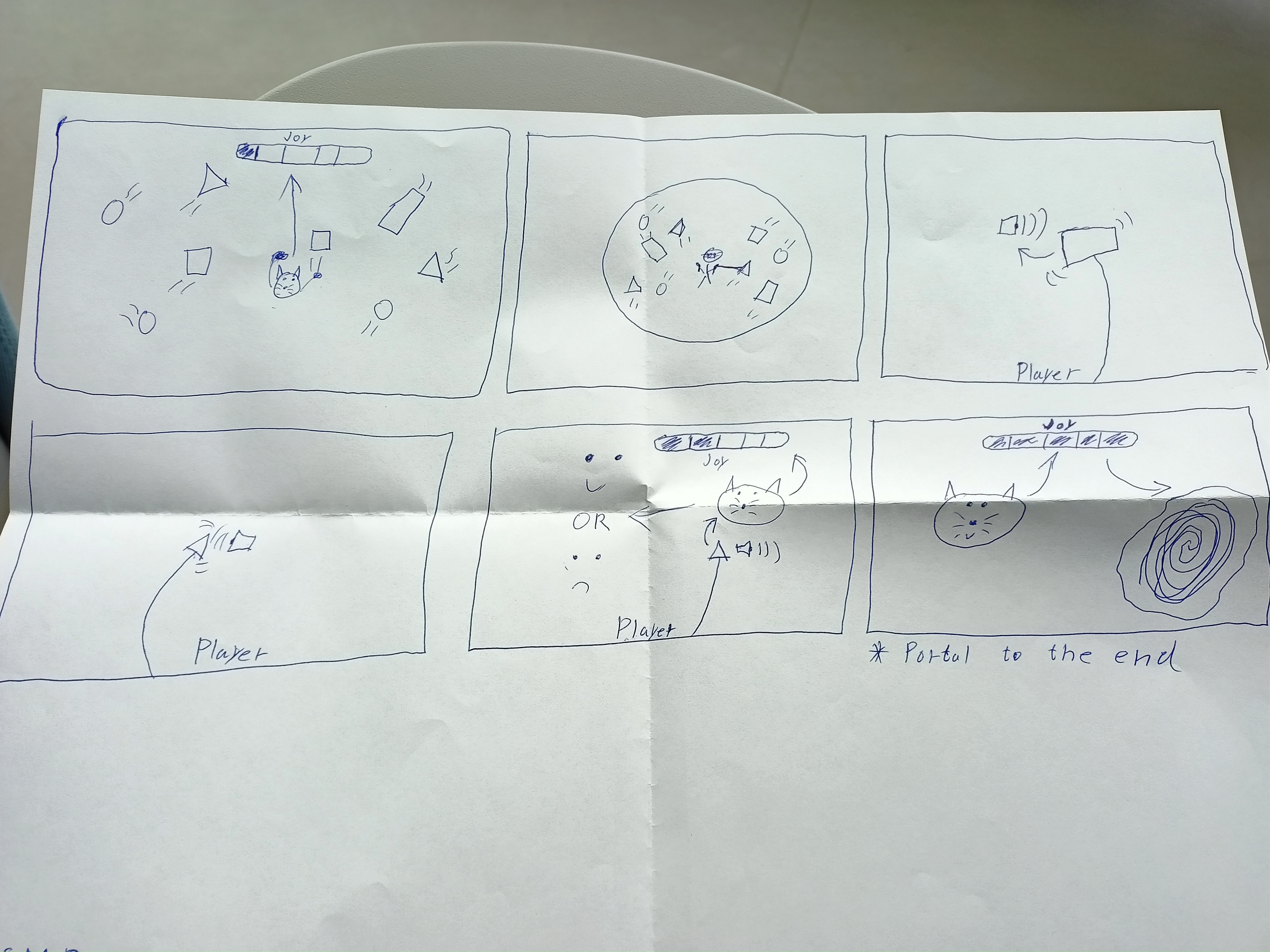
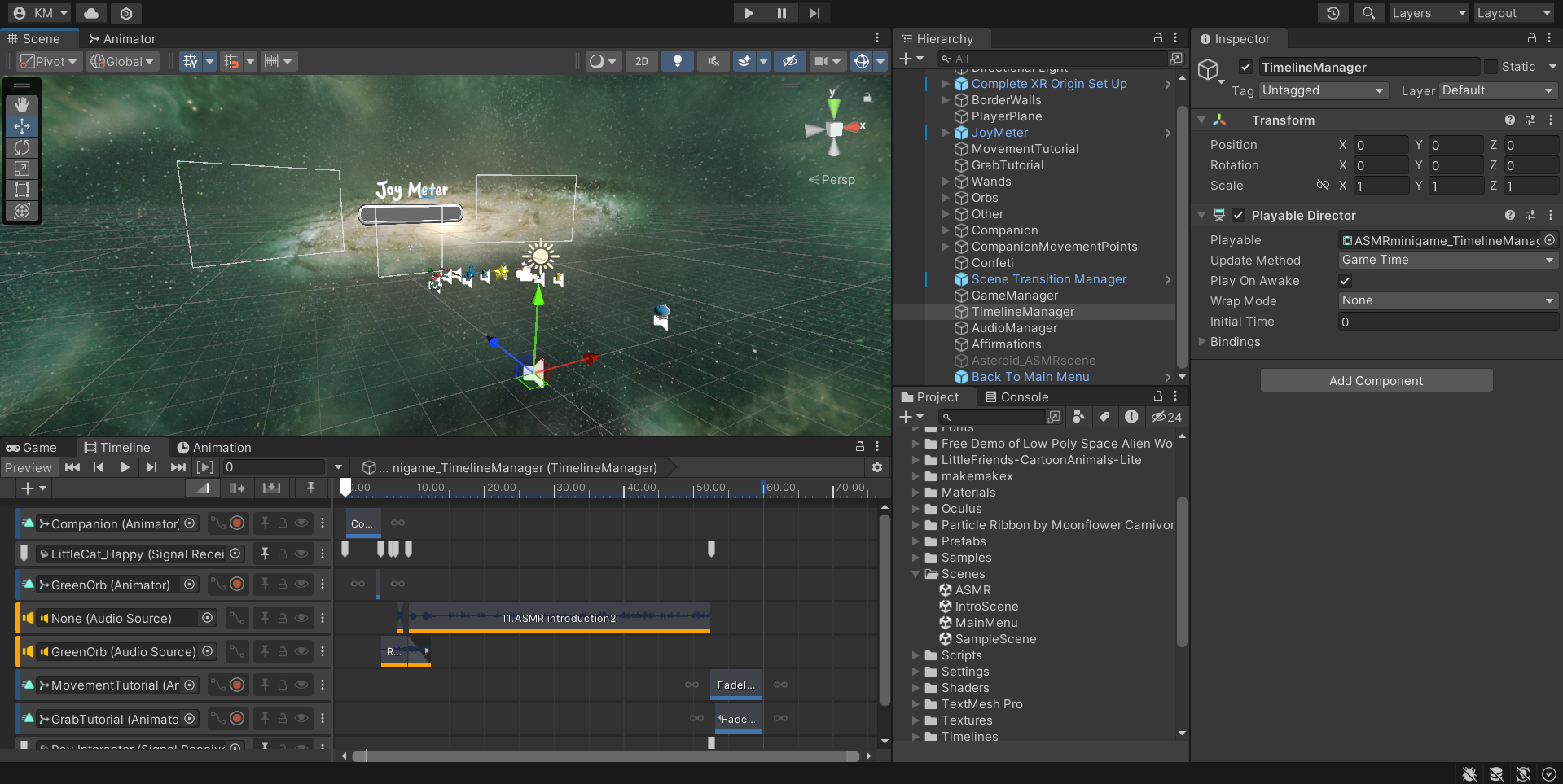
The prototype was tested with six representatives of the target group. During testing, we used the triangulation method, which included observations, surveys, and interviews. I handled the test facilitation and guidance while other teammates observed and took notes.
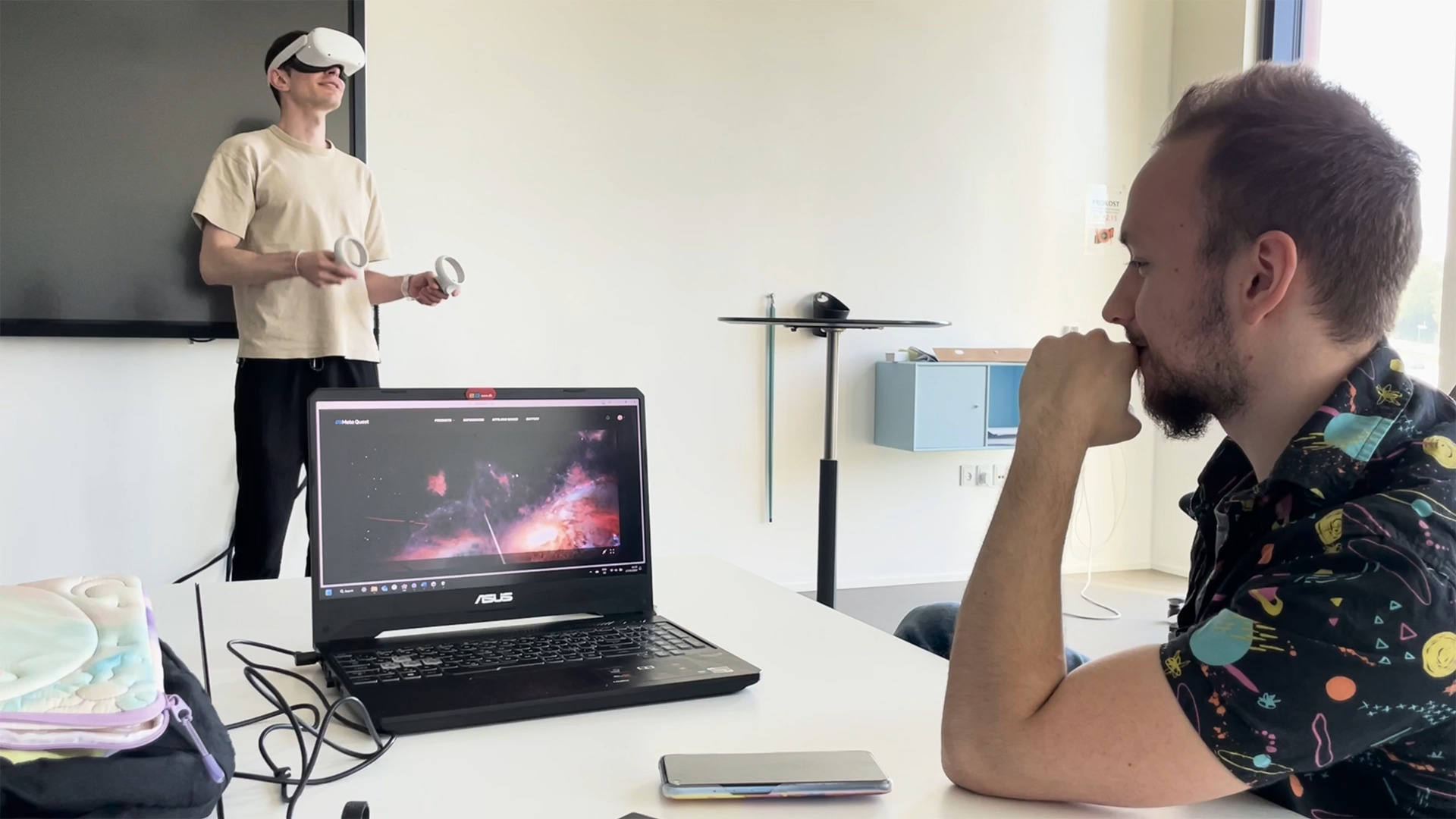
Result
The final prototype allowed us to answer our theoretical question we set at the beginning of the project: Does ASMR in virtual reality have the potential to reduce stress among Gen Z?
The answer was yes, since all of the test participants reported reduced stress levels after using the prototype. However, we acknowledge that more testing on a much larger sample size would be needed in the future to increase the credibility and validity of our research findings.
Our concept was designed to lay the foundation for further development or expansion of the VR experience. For example, the VR experience could be expanded with a sandbox mode, where players can engage with any minigames in any order and personalize their own space (e.g., forest, ocean, skies).
Credits:
- Krystof Marasek
- Dominik Satke
- Magdalena Antonina Lisinska
- Noah Petersen
| Status | Prototype |
| Platforms | Android |
| Author | krySHOT |
| Genre | Simulation |
| Tags | asmr, Experimental, Relaxing, Space, Virtual Reality (VR) |
Download
Install instructions
To play the game you need an Android device; preferably Meta Quest 2.
- Download the .apk file
- Copy it to the headset through a cable
- Put on the headset and go to your App Library
- Use the filter in the top right corner to see files from Unknown Sources
- Click on "Mindful ChuChu Prototype" to start the experience
DISCLAIMER: this build was developed and tested only on Meta Quest 2; compatibility with other VR headsets is not guaranteed.

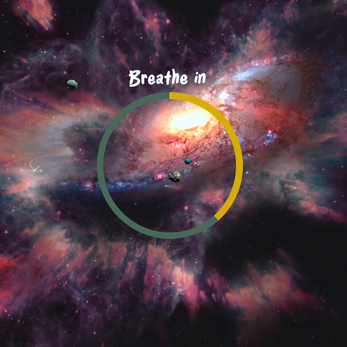
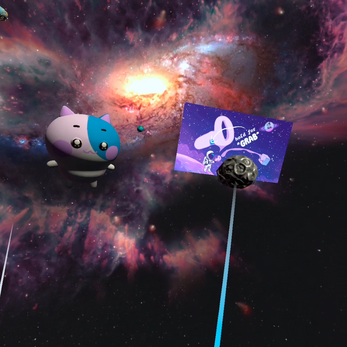
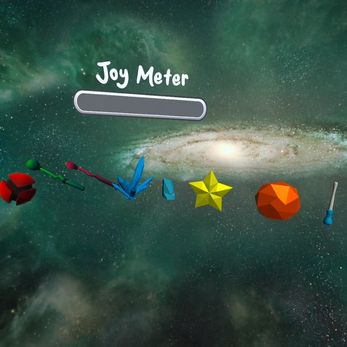
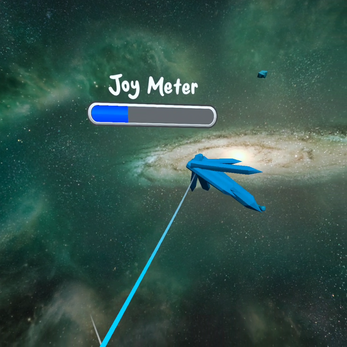
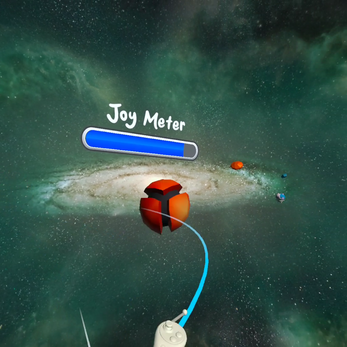
Leave a comment
Log in with itch.io to leave a comment.